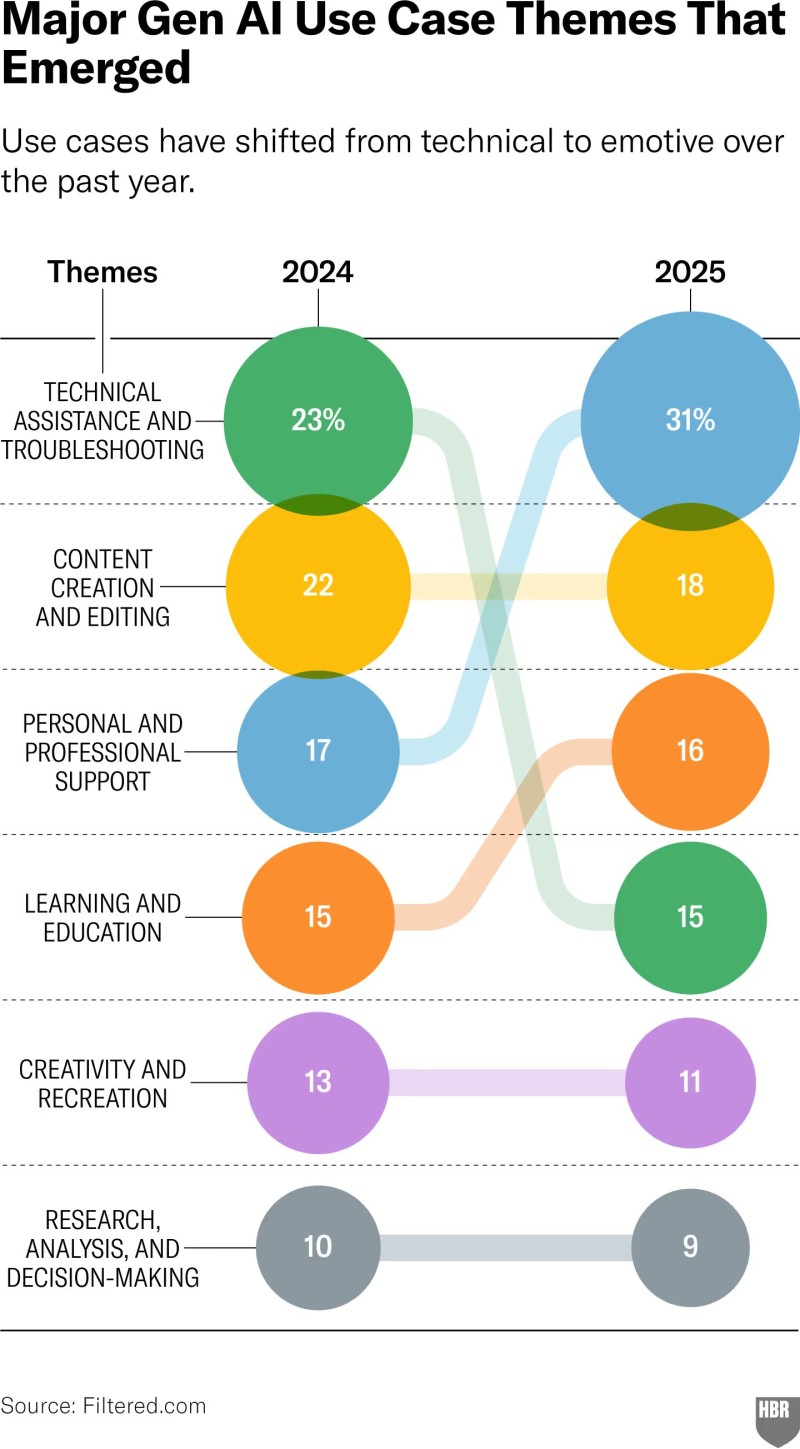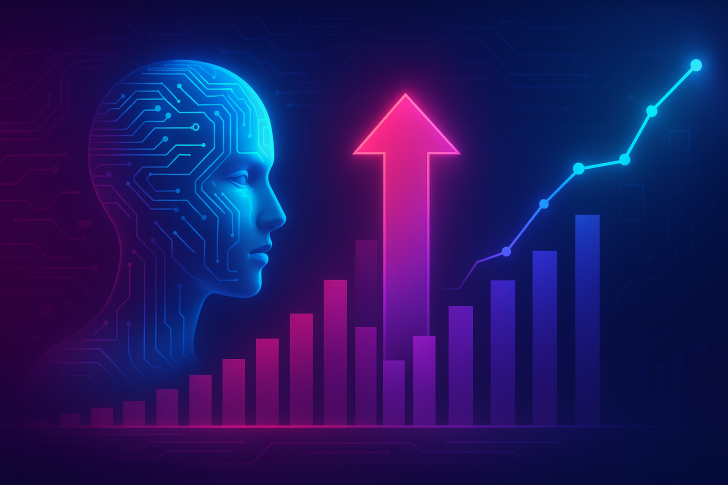⬤ Fresh data from Filtered shows a major shift in how people actually use generative AI between 2024 and 2025. The numbers tell a clear story: users are moving away from one-off queries and toward building repeatable workflows that handle everyday tasks. Technical assistance jumped from 23% to 31%, making it the biggest category by far. Meanwhile, content creation dropped slightly from 22% to 18%, suggesting people are getting more selective about when they fire up AI tools.

⬤ What's driving this change? Non-technical users are finally figuring out they don't need to code to build sophisticated AI systems. They're connecting tools like ChatGPT, Claude, Make, and Zapier into multi-step chains that automate repetitive work. The process is straightforward: break down a workflow, write clear instructions, add real examples, then let simple connectors handle the automation. Personal support held steady at 16%, while learning remained at 15%.

⬤ This matters because it's expanding who can actually benefit from AI day-to-day. When regular users apply chained workflows to communication, document handling, and decision-making, demand for AI platforms naturally grows. The data points to something bigger than a trend—AI is becoming standard infrastructure for how work gets done in 2025.
⬤ The shift from isolated prompts to structured workflows represents a maturation of the AI adoption curve. As platforms like Airtable and Notion integrate deeper with AI models, the barrier between thinking about a process and automating it continues to shrink. What started as experimental tech for early adopters is now becoming the default approach for handling routine business operations across industries.
 Eseandre Mordi
Eseandre Mordi

 Eseandre Mordi
Eseandre Mordi


